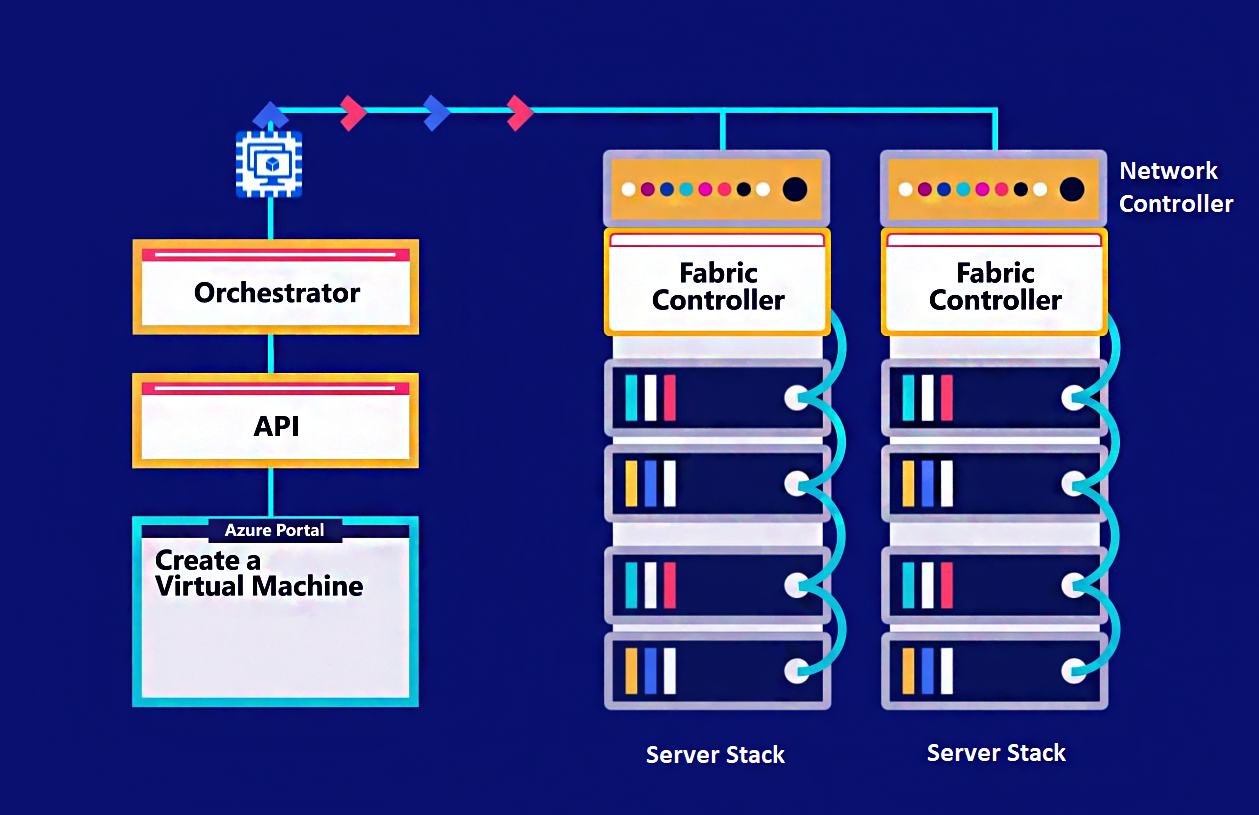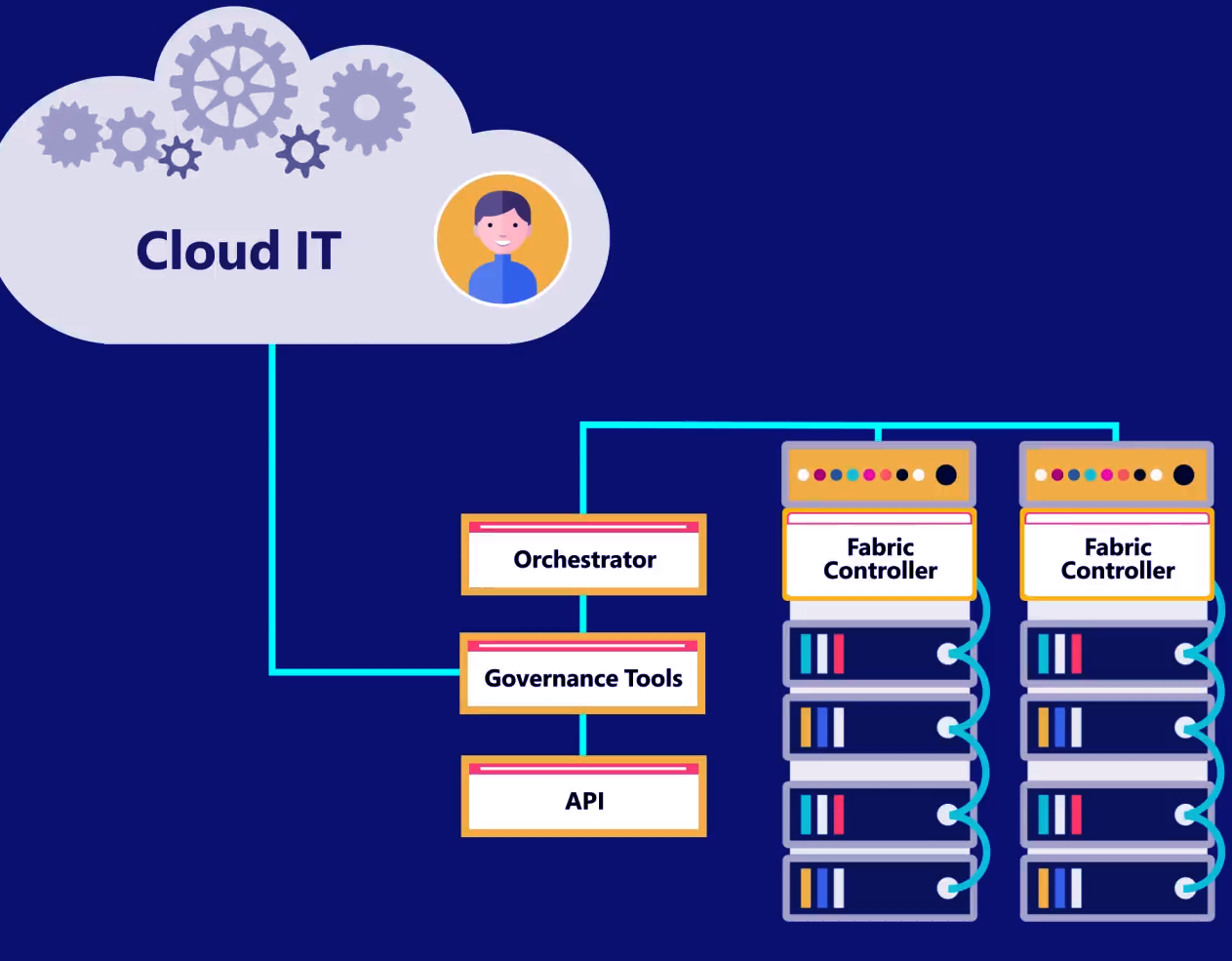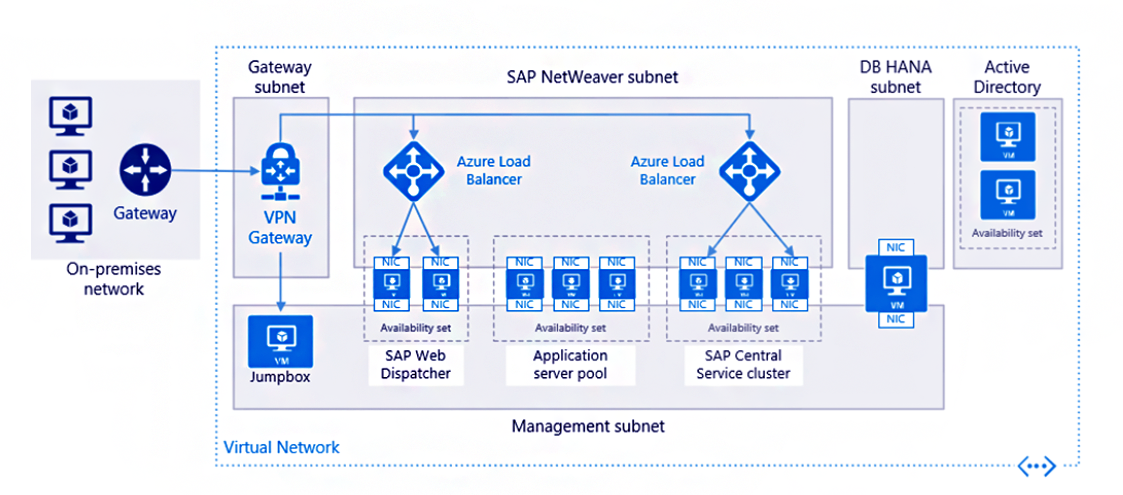How to Use SAP HANA on Azure – Working with Example
FREE Online Courses: Click, Learn, Succeed, Start Now!
In this SAP HANA tutorial, we will be focusing on the deployment of SAP HANA on Azure environment. As SAP HANA is a widely accepted technology, we shall learn how can it be mounted and used on Azure platform. We will start this lesson by learning the basics of Microsoft Azure. Moreover, we will cover, it’s working and focus on how to use SAP HANA on Azure.
What is Microsoft Azure?
Microsoft Azure (formerly known as Windows Azure) is a cloud computing platform launched by Microsoft. We are all aware of the immense popularity cloud computing has gained over time. Through cloud computing, a large and wide user base gets access to computing resources such as servers, storage, a dedicated network, virtual machine, security etc. through the internet (cloud).
In order to redeem the cloud services, a user needs to connect to a cloud service provider from a device through the internet. The cloud service providers have a cloud computing environment, which is a network of numerous data centres spread across the country.
These data centres have hundreds of servers, storage systems and other components. We can use to provide various services to the client. Cloud computing is used for various purposes such as machine learning and data analysis, data storage and backup, streaming media content, creating and testing applications, and hosting applications.
Microsoft Azure is also a cloud service provider with about a network of 54 datacenters loaded with computing resources spread across the globe. Using Azure, you can access and manage a wide range of services provided by Microsoft.
Azure was launched on 1st of February 2010 by Microsoft and is now the biggest cloud computing platform in the market. Azure has a pay per use scheme, which lets users pay only for the services they require. Also, Azure supports a wide variety of operating systems and languages such as C#, Node.Js, Java programming etc.
How Does SAP HANA on Azure Work?
Microsoft Azure is used to building, deploy and manage applications. Now, let us focus on how in reality does this Azure system work? The working of Azure is based on the creation and use of virtual machines. A virtual machine mocks an actual computer but is only a file or virtual software deployed on a device.
To put it in other words, it is like creating a computer in a computer. A virtual machine maps the virtual hardware requirements such as CPU, memory, hard drives, network interfaces and other components on a physical machine and uses them from there.
Thus, a virtual machine can run on a physical machine using its hardware resources and operating system smartly. Also, a virtual machine does not interfere with the functioning of the physical machine. Thus, providing an ideal work environment for application testing, testing beta versions of operating systems, accessing virus susceptible data, creating backups etc.
In the case of Microsoft Azure, it can deploy multiple virtual machines running parallelly on different OS (like Windows or Linux) via servers and manage it with a software called Hypervisor. A hypervisor operates on an artificial layer between the server and the virtual machine providing it with all the required resources.
The concept of virtual machines, imply on a global scale in the case of Microsoft Azure. Numerous servers operate on each Microsoft Azure datacentre worldwide. Each datacentre has a collection of server stack.
Upon each server, there is a hypervisor which is responsible for efficient resource distribution to be able to run multiple virtual machines. Upon each server rack or stack is a network switch which provides connectivity to all the servers with the user end.
One server in each rack runs software called Fabric Controller, which is further connected to another component known as an Orchestrator. The orchestrator handles server and user request management. We can access a user request for a particular service through the web API via several tools such as Microsoft Azure Portal’s UI.
Whenever a user requests for a service such as the creation of a virtual machine, a web application, load balancer, etc. Through the Azure portal, it goes to the Orchestrator which packages all the user requirements and sends it further on to the fabric controller and a suitable server in a selected rack.
The fabric controller, based on the user requirements creates a virtual machine. Which can provide the required resources from the server and makes the virtual machine available for the user.
However, giving users the flexibility to create applications of their choice with the freedom to use as much of Azure’s resource might prove to be uneconomic. We can use additional resource access management tools to check on resources and monitor and its usage for resource governance.
Which maintains a balance between providing users with enough agility and avoiding overuse and wastage of resources.
Services Provided by Microsoft Azure
Microsoft Azure provides a gamut of services which are broadly categorized into 18 categories. The services in particular ranges up to 200. The service categories are –
- Computing
- Networking
- Storage
- Internet of things
- Migration
- Mobile
- Analysis
- Containers
- Artificial Intelligence and Machine learning
- Integration
- Management tools
- Developer tools
- Databases
- Security
- DevOps
- Media
- Identity
- Web
SAP HANA on Azure Architecture
We can deploy and run SAP HANA on Azure’s service and resources. Azure provides virtual machines for SAP HANA and non-sharable, dedicated bare-metal servers. These servers are part of a larger environment or infrastructure having CPUs, storage components, networking setup etc.
This service is known to be an SAP HANA certified Tailored Datacenter Integration (TDI) and infrastructure stamps that run SAP HANA on Azure.
SAP HANA applications run on the SAP application-layer which is a layer of virtual machines. In an SAP HANA unit, the components can range from being 36 Intel CPUs core with a memory of 786 GB to 480 Intel CPUs with 24 TB of memory.
A user or a customer get isolate and dedicate the service in terms of networking storage and computing within the Azure environment SAP HANA.
In the image shown above, we can learn about the architecture of SAP HANA on Azure. As we can see, several Azure services and components like load balancing, clustering, HANA database, active directory are part of the virtual machine. We can use the virtual machine or environment on-premise by the users through the internet and a dedicated network.
Conclusion
Deploying and using SAP HANA on Microsoft Azure is a win-win situation. As it substantially lowers the investment made in hardware resources required for SAP HANA’s functioning. While taking Azure’s services, you have to pay only for the set of services you would want to run on your SAP HANA solution and for how long.
Along with being economic, Azure proves to be a smart cloud deployment choice for the SAP HANA users for many reasons.
Did you like our efforts? If Yes, please give DataFlair 5 Stars on Google






Great info regarding Hana on azure would have been better if you explain load balancing by azure on hana